Books by Tommaso Mattioli
Articles EN by Tommaso Mattioli
This paper presents the results of field walking, magnetometer survey and UAV-based near infrared... more This paper presents the results of field walking, magnetometer survey and UAV-based near infrared (NIR) photogrammetry at the Tavoliere Neolithic site designated J155/FG003663/ Posta Barone Grella I southwest of Cerignola (FG) in Puglia. These techniques were utilised as a means of locating areas for future excavation: the methodology presented here in turn provides a framework for future archaeologists interested in understanding the nature of subsurface site structures prior to excavation. Of particular note is the fact that the NIR photography picked up boundary ditches even though the crops in the field had already been harvested. Agreement between magnetometer survey and UAV-based imaging was also strong.

Díaz-Andreu, M., Gutiérrez Martinez, M., Mattioli, T., Picas, M., Villalobos, C., Zubieta, L. 2020. "The soundscapes of Baja California Sur: preliminary results from the Cañón de Santa Teresa rock art landscape." Quaternary International This article argues that the recent emphasis on quantitative methods should also include the appl... more This article argues that the recent emphasis on quantitative methods should also include the application of rigorous science-based methodologies for the study of sound and acoustics among past communities. The benefits of including methods developed in acoustical physics have been shown with the analysis of the rock art landscape in the Cañón de Santa Teresa gorge in Baja California Sur (Mexico), where the Great Mural rock art tradition was produced. Thanks to a thorough examination of a series of monaural and binaural acoustic parameters, we have been able to conclude that the artists selected the best sonic landscapes in which to create their rock art, both paintings and carvings, especially the latter. We have also been able to demonstrate that the sector of the canyon with a special concentration of two profusely painted caves, Cueva Pintada and Las Flechas, is precisely that with the most favorable acoustic conditions in the whole tested area.
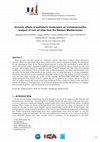
In ICA2019 Conference Proceedings, 2019
Many pre-state societies around the world give special importance to places where distinctive aco... more Many pre-state societies around the world give special importance to places where distinctive acoustic effects are generated. These places often receive special treatment including the production of rock paintings in them. In the Western Mediterranean, it seems that outstanding acoustic effects such as directional echoes, augmented audibility and long reverberation time are present in some rock art areas with Neolithic depictions made between the 7 th and 4 th millennia BC. These have been painted in different styles that have been given the name of Macroschematic, Levantine and Schematic rock art styles. On the basis of the results of our acoustic tests, we argue that there is a strong probability of acoustics having been used as a method by Neolithic artists to select the shelters in which to produce rock art. This paper presents the results of the ongoing ARTSOUNDSCAPES ERC Project on archaeoacoustics. This project seeks to explore the role of sound in the creation and use of rock art sites. he authors discuss the results of previous fieldwork in three countries (Spain, France and Italy) and the development of an innovative set of research methods that include 3D Ambisonic recordings, GIS soundshed analysis, and Transmission Loss measurements.
In GARCÍA ATIÉNZAR,G. and BARCIELA GONZALEZ, V. Sociedades prehistóricas y manifestaciones artísticas Imágenes, nuevas propuestas e interpretaciones. , 2019
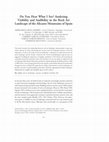
Díaz-Andreu, M., García Atiénzar, G., García Benito, C., Mattioli, T., 2017, Do you hear what I see? Analyzing visibility and audibility in the rock art landscape of the Alicante Mountains in Spain, Journal of Anthropological Research, 73, 2, 181-213. https://doi.org/10.1086/692103 This article examines the relationship between rock art landscapes and perception. It pays par- t... more This article examines the relationship between rock art landscapes and perception. It pays par- ticular attention to vision and hearing, the two key senses for landscape awareness. Given the importance of scale in the study of rock art landscapes, a distinction is made between the ad- jacent landscape and the broader territorial scale. Several methodological improvements are suggested, including the importance of clipping viewsheds in GIS analysis and measuring di- rectionality instead of orientation of the rock art shelters. In our case-study we explore the rock art landscape of the Alicante Mountains (northeastern Spain) during the Neolithic period (ca. 5600 to 2800 cal bc). A new interpretation of how the cognitive and symbolic behavior of communities changed over time is offered. We argue that the analysis of perception in rock art landscapes can provide novel ways of understanding communities’ distinctive appropriation of their landscapes, linking both the tangible and intangible aspects of their culture.
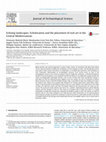
Mattioli, T., Farina, A., Armelloni, E., Hameau, Ph., Díaz-Andreu, M., 2017, Echoing landscapes: Echolocation and the placement of rock art in the Central Mediterranean, Journal of Archaeological Science, 83 (2017), 12-25. Many societies give special importance to places where echoes are generated, and often these plac... more Many societies give special importance to places where echoes are generated, and often these places receive special treatment including the production of rock paintings in them. The identification of the exact places where echoes come from, or echolocation, is an ability only shared by a few individuals in each community. Unfortunately for archaeologists, however, their activity leaves no trace in the archaeological record. In this article we propose that the Ambisonics technique, a method developed in the field of acoustical physics, can be applied to identify the likely use of echolocation among societies for which no ethnographic information remains, such as most of those who lived in prehistoric Europe. A description of how this method has been applied in two case studies, the rock art landscapes of Baume Brune (Vaucluse, France) and Valle d’Ividoro (Puglia, Italy), is provided. In these two echoing areas only a few shelters were chosen to be painted with Schematic art, leaving around them many others undec- orated. In the description of the fieldwork phase of the test, issues related to the sound source, the sound recorder, and spherical camera and how the Impulse Response (IR) measurement was made are dis- cussed. The processed results indicate that there was a positive relationship between sound-reflecting surfaces and the location of rock art. This leads us to propose that in both areas there is a strong probability of echolocation having been employed by Neolithic people to select the shelters in which to produce rock art. The results obtained in our study also have wider implications in our understanding of how prehistoric peoples perceived the landscape in which they lived in, understood not only on the basis of tangible elements but, perhaps more importantly, because of intangible aspects such as sound and, in particular, echoes.
The audio/video presentation of this article is available here: http://audioslides.elsevier.com//ViewerLarge.aspx?source=1&doi=10.1016/j.jas.2017.04.008
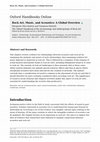
This article reviews evidence for relationships between acoustics and rock art by examining the a... more This article reviews evidence for relationships between acoustics and rock art by examining the antiquity and nature of such relationships, then examining evidence for music depicted or engraved in rock art. This is followed by a summary of the remains of actual musical instruments found at rock art sites, including lithophones found at or close to rock art. The sonority of rock art landscapes is then assessed, first in those cases where natural elements can unleash special sonorous effects and then in places where exceptional acoustics have been selected for the creation of artworks. The authors conclude that a consideration of sound is common in the placement of rock art and that it should therefore be more routinely considered when recording rock art. The significance of sound in social relations and religious activities makes this aspect of rock art sites essential for understanding the societies that produced it.
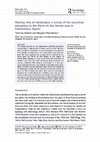
This article focuses on the augmented audibility of distant sounds that is experienced in some ro... more This article focuses on the augmented audibility of distant sounds that is experienced in some rock art sites. We pro- pose a method developed in acoustical physics to measure this acoustic phenomenon, the Transmission Loss (TL) ana- lysis. We have assessed the validity of the method in our study area, the Sierra de San Serván in the region of Extremadura (Spain), an area where from the hundreds of shelters only sixty five were decorated with Schematic art during prehistory. The analysis undertaken in it has pro- vided unequivocal data that indicate that augmented audi- bility of distant sounds seemed to be a factor considered by the prehistoric artists for the selection of rock art shelters to paint in. This is especially made clear when a comparison between the results obtained in shelters with rock art and others in the same area without it is made. From all the sites one stands out, that of Las Palomas 2, with the best results. This site is also special for other features that no other site in the area has in terms of difficult access and high visibility
(English) This paper presents an update on the progress of the project " Pots and People of the T... more (English) This paper presents an update on the progress of the project " Pots and People of the Tavoliere Neolithic ". We describe our ceramic study methodology and the current status of our database. We also present a brief case study involving clays and ceramics from the site of Serra di Cristo. Finally, we present results of geophysical and near infrared (NIR) survey at the site of Posta Barone Grella I. Abstract (Italiano) Questo intervento fornisce un aggiornamento sullo sviluppo del progetto " Cera-mica e Gente del Tavoliere Neolitico ". Si descrive la nostra metodologia per lo studio della ceramica e lo status attuale del nostro database. Si presenta anche un bre-ve caso di studio sull'argilla e sulle ceramiche provenienti dal sito di Serra di Cristo. Sipresentano infine irisultati delle indagini geofisiche e con fotografia quasi infra-rossa condotte nel sito di
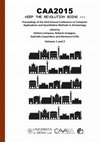
Abstract: Archaeoacoustics refers to the field of study concerned with the effects of sound in pa... more Abstract: Archaeoacoustics refers to the field of study concerned with the effects of sound in past societies. Scholars interested in acoustics try to understand the human past beyond its materiality by recovering a set of less evident, less tangible cultural signs relating to the sense of hearing. Of the many contexts in which the intangible evidence of acoustics can be analysed, this paper pays attention to its expression in rock art. Our aim is to explore the quantitative analyses undertaken for the study of acoustics in rock art landscapes by focusing on the three main lines of evidence that rock art researchers are following: (i) landscapes with spe- cial naturally occurring sounds; (ii) lithophones, ringing rock, and rock gongs; (iii) intentionally produced sound. Three acoustic effects have been usually subjected to quantitative measurement: echoes, resonance, and reverberation. We will argue that not all lines of evidence have been explored in equal measure by scholars and that there are specific types of acoustic measurements and analysis, the potential of which are still to be assessed.
CAA2012 Proceedings of the 40th Conference in Computer Applications and Quantitative Methods in Archaeology, Southampton, United Kingdom, 26-30 March 2012
This paper presents two different methods (topographic and GIS based analysis) applied by the aut... more This paper presents two different methods (topographic and GIS based analysis) applied by the authors to recognize the layout of transhumance pathways in Umbria and Sabina regions (Central Italy) and to investigate the spatial correlation between pre-Roman ‘castellieri’ (Italic hillforts) and transhumance routes.

Museion - Journal of the Classical Association of Canada, 2010
Abstract:
The Canadian Excavations at Roccagloriosa supported by generous SSHRC Grants in the ... more Abstract:
The Canadian Excavations at Roccagloriosa supported by generous SSHRC Grants in the 1980s has produced a number of Field Reports and two substantial volumes on this important site of pre-Roman Italy. On-going research on the finds and the more recent campaigns of geophysical exploration have added crucial information on the level of complexity of the Lucanian site at the peak of its development. At the same time, the data emerging from the most recent field-work at the site provides a much more complete picture of the organization of the Central Plateau, the major agglomeration of buildings inside the massive fortification wall.
Résumé:
Les missions archéologiques canadiennes à Roccagloriosa, généreusement supportées par les subventions du CRSH dans les années 1980, ont donné lieu à de nombreux rapports de fouilles, ainsi qu'à deux volumes substantiels sur cet important site de l'Italie préromaine. Les travaux de recherche en cours sur ces découvertes et les campagnes d'exploration géophysique plus récentes ont apporté un supplément d'information crucial concernant le niveau de complexité du site lucanien au faîte de son développement. Parallèlement, les données qui se dégagent de la plus récente campagne archéologique sur le site donnent une image plus complète de l'organisation du « plateau central », la principale agglomération d'habitations à l'intérieur des imposantes murailles.
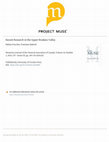
Mouseion: Journal of the Classical Association of Canada Volume 10, Number 2, 2010 , 2010
Abstract:
In southern Italy, with particular reference to the upper Bradano river valley in an... more Abstract:
In southern Italy, with particular reference to the upper Bradano river valley in ancient Eastern Lucania, agglomerated rural settlements are generally studied as part of the later third and fourth centuries AD when they become the protagonists in the late antique landscape in southern Italy. The late antique landscape, however, is usually considered to be an inorganic and discontinuous settlement manifestation. Yet, in many areas of southern Italy the growth and importance of agglomerated rural settlements in the Roman landscape predates the later third century. In the upper Bradano river valley, independent vici become important elements of the rural Roman landscape as early the second century AD, when some vici develop a specific productive function while others remain primarily residential. The growth in vici in the upper Bradano valley is clearly tied to architectural monumentalization and increased agricultural production at the excavated villa sites. The combination of these factors in the second century suggests a land concentration and intensification of production on villa sites and the presence of a substantial lower class living in vici.
Résumé:
En Italie du Sud, et particulièrement dans la haute vallée du Bradano, en ancienne Lucanie orientale, les agglomérations rurales sont généralement étudiées comme un phénomène de la fin du IIIe siècle et du IVe siècle après J. C., alors qu'elles deviennent des protagonistes dans le paysage de l'Antiquité tardive en Italie du Sud. Le paysage de l'Antiquité tardive est pourtant habituellement considéré comme le produit d'un peuplement inorganique et discontinu. Toutefois, dans plusieurs régions de l'Italie du Sud, la croissance et l'importance des agglomérations rurales dans le paysage romain précède la fin du IIIe siècle. Dans la haute vallée du Bradano, les vici indépendants deviennent un élément important du paysage rural romain dès le IIe siècle, lorsque certains vici développent une fonction productive spécifique, tandis que les autres demeurent principalement résidentiels. L'accroissement des vici dans la haute vallée du Bradano est clairement lié à la monumentalisation de l'architecture et à l'augmentation de la production agricole sur les sites des villas fouillées. La combinaison de ces facteurs au IIe siècle suggère une concentration foncière et une intensification de la production sur le site des villas, ainsi que la présence substantielle dans les vici d'une population issue des basses classes.
Articoli ITA by Tommaso Mattioli
Daidalos. Studi e Ricerche del Dipartimento di Scienze del Mondo Antico. 10, 2010


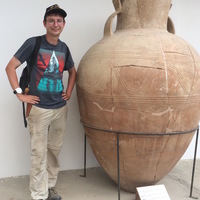
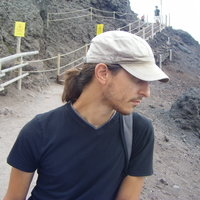


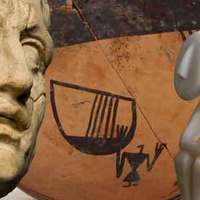



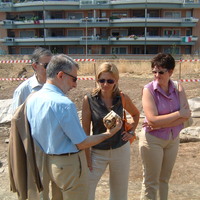
Uploads
Books by Tommaso Mattioli
Articles EN by Tommaso Mattioli
The audio/video presentation of this article is available here: http://audioslides.elsevier.com//ViewerLarge.aspx?source=1&doi=10.1016/j.jas.2017.04.008
The Canadian Excavations at Roccagloriosa supported by generous SSHRC Grants in the 1980s has produced a number of Field Reports and two substantial volumes on this important site of pre-Roman Italy. On-going research on the finds and the more recent campaigns of geophysical exploration have added crucial information on the level of complexity of the Lucanian site at the peak of its development. At the same time, the data emerging from the most recent field-work at the site provides a much more complete picture of the organization of the Central Plateau, the major agglomeration of buildings inside the massive fortification wall.
Résumé:
Les missions archéologiques canadiennes à Roccagloriosa, généreusement supportées par les subventions du CRSH dans les années 1980, ont donné lieu à de nombreux rapports de fouilles, ainsi qu'à deux volumes substantiels sur cet important site de l'Italie préromaine. Les travaux de recherche en cours sur ces découvertes et les campagnes d'exploration géophysique plus récentes ont apporté un supplément d'information crucial concernant le niveau de complexité du site lucanien au faîte de son développement. Parallèlement, les données qui se dégagent de la plus récente campagne archéologique sur le site donnent une image plus complète de l'organisation du « plateau central », la principale agglomération d'habitations à l'intérieur des imposantes murailles.
In southern Italy, with particular reference to the upper Bradano river valley in ancient Eastern Lucania, agglomerated rural settlements are generally studied as part of the later third and fourth centuries AD when they become the protagonists in the late antique landscape in southern Italy. The late antique landscape, however, is usually considered to be an inorganic and discontinuous settlement manifestation. Yet, in many areas of southern Italy the growth and importance of agglomerated rural settlements in the Roman landscape predates the later third century. In the upper Bradano river valley, independent vici become important elements of the rural Roman landscape as early the second century AD, when some vici develop a specific productive function while others remain primarily residential. The growth in vici in the upper Bradano valley is clearly tied to architectural monumentalization and increased agricultural production at the excavated villa sites. The combination of these factors in the second century suggests a land concentration and intensification of production on villa sites and the presence of a substantial lower class living in vici.
Résumé:
En Italie du Sud, et particulièrement dans la haute vallée du Bradano, en ancienne Lucanie orientale, les agglomérations rurales sont généralement étudiées comme un phénomène de la fin du IIIe siècle et du IVe siècle après J. C., alors qu'elles deviennent des protagonistes dans le paysage de l'Antiquité tardive en Italie du Sud. Le paysage de l'Antiquité tardive est pourtant habituellement considéré comme le produit d'un peuplement inorganique et discontinu. Toutefois, dans plusieurs régions de l'Italie du Sud, la croissance et l'importance des agglomérations rurales dans le paysage romain précède la fin du IIIe siècle. Dans la haute vallée du Bradano, les vici indépendants deviennent un élément important du paysage rural romain dès le IIe siècle, lorsque certains vici développent une fonction productive spécifique, tandis que les autres demeurent principalement résidentiels. L'accroissement des vici dans la haute vallée du Bradano est clairement lié à la monumentalisation de l'architecture et à l'augmentation de la production agricole sur les sites des villas fouillées. La combinaison de ces facteurs au IIe siècle suggère une concentration foncière et une intensification de la production sur le site des villas, ainsi que la présence substantielle dans les vici d'une population issue des basses classes.
Articoli ITA by Tommaso Mattioli
The audio/video presentation of this article is available here: http://audioslides.elsevier.com//ViewerLarge.aspx?source=1&doi=10.1016/j.jas.2017.04.008
The Canadian Excavations at Roccagloriosa supported by generous SSHRC Grants in the 1980s has produced a number of Field Reports and two substantial volumes on this important site of pre-Roman Italy. On-going research on the finds and the more recent campaigns of geophysical exploration have added crucial information on the level of complexity of the Lucanian site at the peak of its development. At the same time, the data emerging from the most recent field-work at the site provides a much more complete picture of the organization of the Central Plateau, the major agglomeration of buildings inside the massive fortification wall.
Résumé:
Les missions archéologiques canadiennes à Roccagloriosa, généreusement supportées par les subventions du CRSH dans les années 1980, ont donné lieu à de nombreux rapports de fouilles, ainsi qu'à deux volumes substantiels sur cet important site de l'Italie préromaine. Les travaux de recherche en cours sur ces découvertes et les campagnes d'exploration géophysique plus récentes ont apporté un supplément d'information crucial concernant le niveau de complexité du site lucanien au faîte de son développement. Parallèlement, les données qui se dégagent de la plus récente campagne archéologique sur le site donnent une image plus complète de l'organisation du « plateau central », la principale agglomération d'habitations à l'intérieur des imposantes murailles.
In southern Italy, with particular reference to the upper Bradano river valley in ancient Eastern Lucania, agglomerated rural settlements are generally studied as part of the later third and fourth centuries AD when they become the protagonists in the late antique landscape in southern Italy. The late antique landscape, however, is usually considered to be an inorganic and discontinuous settlement manifestation. Yet, in many areas of southern Italy the growth and importance of agglomerated rural settlements in the Roman landscape predates the later third century. In the upper Bradano river valley, independent vici become important elements of the rural Roman landscape as early the second century AD, when some vici develop a specific productive function while others remain primarily residential. The growth in vici in the upper Bradano valley is clearly tied to architectural monumentalization and increased agricultural production at the excavated villa sites. The combination of these factors in the second century suggests a land concentration and intensification of production on villa sites and the presence of a substantial lower class living in vici.
Résumé:
En Italie du Sud, et particulièrement dans la haute vallée du Bradano, en ancienne Lucanie orientale, les agglomérations rurales sont généralement étudiées comme un phénomène de la fin du IIIe siècle et du IVe siècle après J. C., alors qu'elles deviennent des protagonistes dans le paysage de l'Antiquité tardive en Italie du Sud. Le paysage de l'Antiquité tardive est pourtant habituellement considéré comme le produit d'un peuplement inorganique et discontinu. Toutefois, dans plusieurs régions de l'Italie du Sud, la croissance et l'importance des agglomérations rurales dans le paysage romain précède la fin du IIIe siècle. Dans la haute vallée du Bradano, les vici indépendants deviennent un élément important du paysage rural romain dès le IIe siècle, lorsque certains vici développent une fonction productive spécifique, tandis que les autres demeurent principalement résidentiels. L'accroissement des vici dans la haute vallée du Bradano est clairement lié à la monumentalisation de l'architecture et à l'augmentation de la production agricole sur les sites des villas fouillées. La combinaison de ces facteurs au IIe siècle suggère une concentration foncière et une intensification de la production sur le site des villas, ainsi que la présence substantielle dans les vici d'une population issue des basses classes.
della Conca Velina (rieti, lazio, italia centrale) nel periodo
compreso tra l’età del bronzo e la romanizzazione. Partendo
dalla correlazione dei dati ricavati dai sondaggi geologici e
da una nuova lettura topografica e dell’assetto idrogeologico
dell’area, gli autori sostengono che l’antica linea di riva del
bacino lacustre che occupava la Piana di rieti, il Canale di
repasto e l’area di Marmore variò nel corso dell’età del
bronzo e dell’età del ferro tra le quote 365/367 metri s.l.m.
e 375/376 metri s.l.m. influenzando lo sviluppo degli abitati
perilacustri. Successivamente con la conquista del territorio
da parte di MAnio CUrio dentAto si assiste al primo vero
intervento di regimentazione delle acque e bonifica della
piana della Conca di rieti.
Unión Cultural Arqueológica (unionculturalarqueologica.wordpress.com/). Universidad Complutense de Madrid
SUMMARY ON http://audioslides.elsevier.com/ViewerSmall.aspx?doi=10.1016/j.jas.2017.04.008&Source=0&resumeTime=0&resumeSlideIndex=25&width=800&height=639
You are cordially invited to participate in the session “Archaeoacoustics – Discussing Sound in Archaeological Contexts” in the 24th Annual Meeting of the European Association of Archaeologists (EAA) in Barcelona, 5–8 September 2018. This session aims to serve as a platform to promote discussion on a variety of themes related to sound archaeology, archaeoacoustics and archaeomusicology (see the session abstract below).
Please submit your paper abstract by 15 February 2018 via the EAA website: https://eaa.klinkhamergroup.com/eaa2018/
General information about the conference, venue, fees and detailed guidelines can be found on: https://www.e-a-a.org/EAA2018/